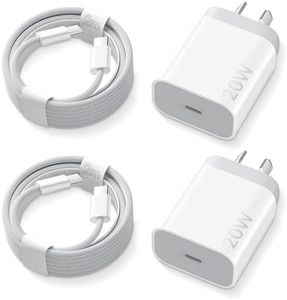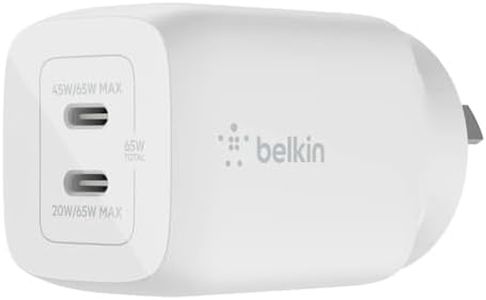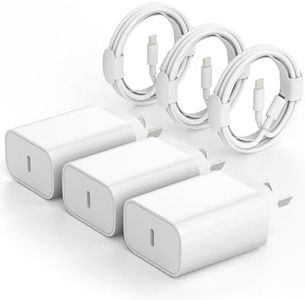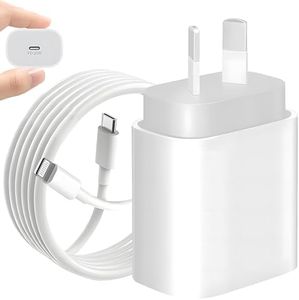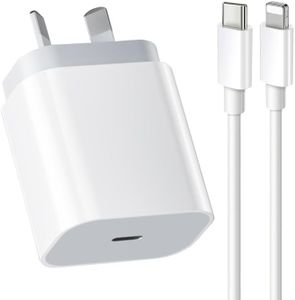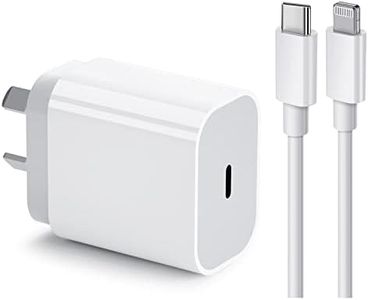We Use CookiesWe use cookies to enhance the security, performance,
functionality and for analytical and promotional activities. By continuing to browse this site you
are agreeing to our privacy policy
10 Best Ipad Chargers
From leading brands and best sellers available on the web.Buying Guide for the Best Ipad Chargers
Choosing the right iPad charger might seem straightforward, but there are several important factors to consider to ensure your iPad charges safely and efficiently. Not all chargers are created equal, and the wrong charger may slow down charging or even damage your device. The best way to select a charger is to understand how different specs affect charging speed, compatibility, and portability. Thinking about how and where you’ll use your charger—at home, in the office, or on the go—can help you pick the best fit.Wattage (Power Output)Wattage refers to how much power the charger can provide to your iPad. It's crucial because a higher wattage charger can charge your device faster, but only if your iPad supports it. Most iPads can safely use chargers with higher wattage, but using a charger with too low wattage will result in very slow charging. Common wattage levels include 5W, 10-12W, 18-20W, and higher. If you have a basic iPad or older model, 10-12W is usually sufficient. For newer iPads, especially iPad Pros, you'll benefit from 18-20W or more. If you want the quickest recharge, check your iPad’s supported wattage and choose a charger that matches or slightly exceeds it.
Port Type (USB-A vs USB-C)The port type determines what cables you can use. USB-A is the traditional rectangular port, while USB-C is the newer, smaller, reversible connector. Many new iPads use USB-C for faster charging and data transfer, while older iPads still rely on USB-A. If you have an older device or want maximum compatibility with existing cables, USB-A is fine. For newer devices—and if you plan to keep your setup up-to-date—USB-C is the better choice. Make sure your cable matches the port on your charger and your iPad.
Number of PortsSome chargers come with multiple ports so you can charge more than one device at a time. This can be useful if you want to charge your iPad and phone together or share your charger with someone else. However, charging multiple devices may split the total power output, potentially slowing down charging speeds. If you often travel or have limited outlets, a multiport charger might be a good fit for you.
Size and PortabilityCharger size matters if you plan to travel or move it between locations. Some chargers are compact and lightweight, making them easy to carry in your bag or pocket. Others are larger but might offer more power or extra ports. If you’re always on the go, choose a compact model. For home or office use, size may be less important, and you can focus more on power and features.
Safety FeaturesGood chargers include safety features like overcurrent, overvoltage, and overheating protection. These help protect both your charger and your iPad from electrical issues. If you value peace of mind or plan to leave your charger plugged in unattended, always look for products that clearly mention built-in safety protections. This is especially important with faster, higher-wattage chargers.
Cable CompatibilitySome chargers come with cables, but others require you to use your own. Match the charger’s port (USB-A or USB-C) with the cable and your iPad’s charging port (Lightning or USB-C, depending on your model). Make sure the cable supports fast charging if your charger and iPad do.
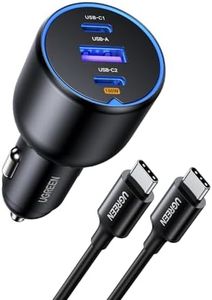
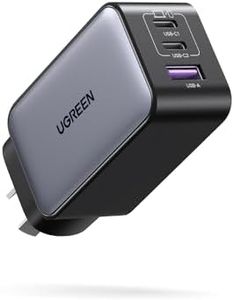
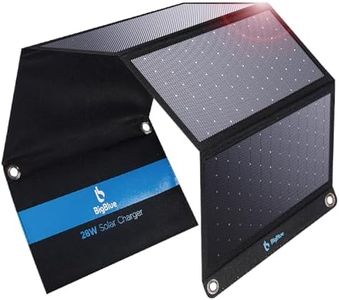

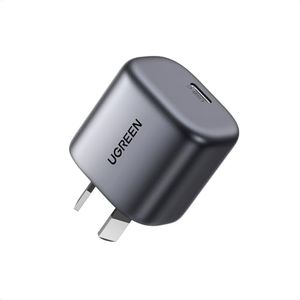

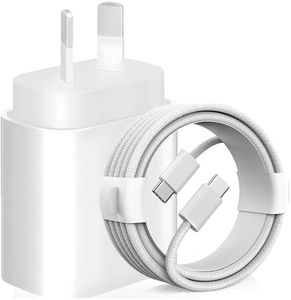
![30W Fast Charger for iPhone 14, [𝐀𝐩𝐩𝐥𝐞 MFi Certified] USB C Fast Charger Plug Block with 2M Type C to Lightning Cable for iPhone 14/13/12/11 Pro/Pro Max/XS Max/XS/XR/X/SE/8/for iPad](https://images-proxy.bestreviews.guide/FKSl6f4kstC5LUgbprKNhHP5-rQ=/0x300/https://m.media-amazon.com/images/I/4126H-g+ftL._AC_CX679_.jpg)
